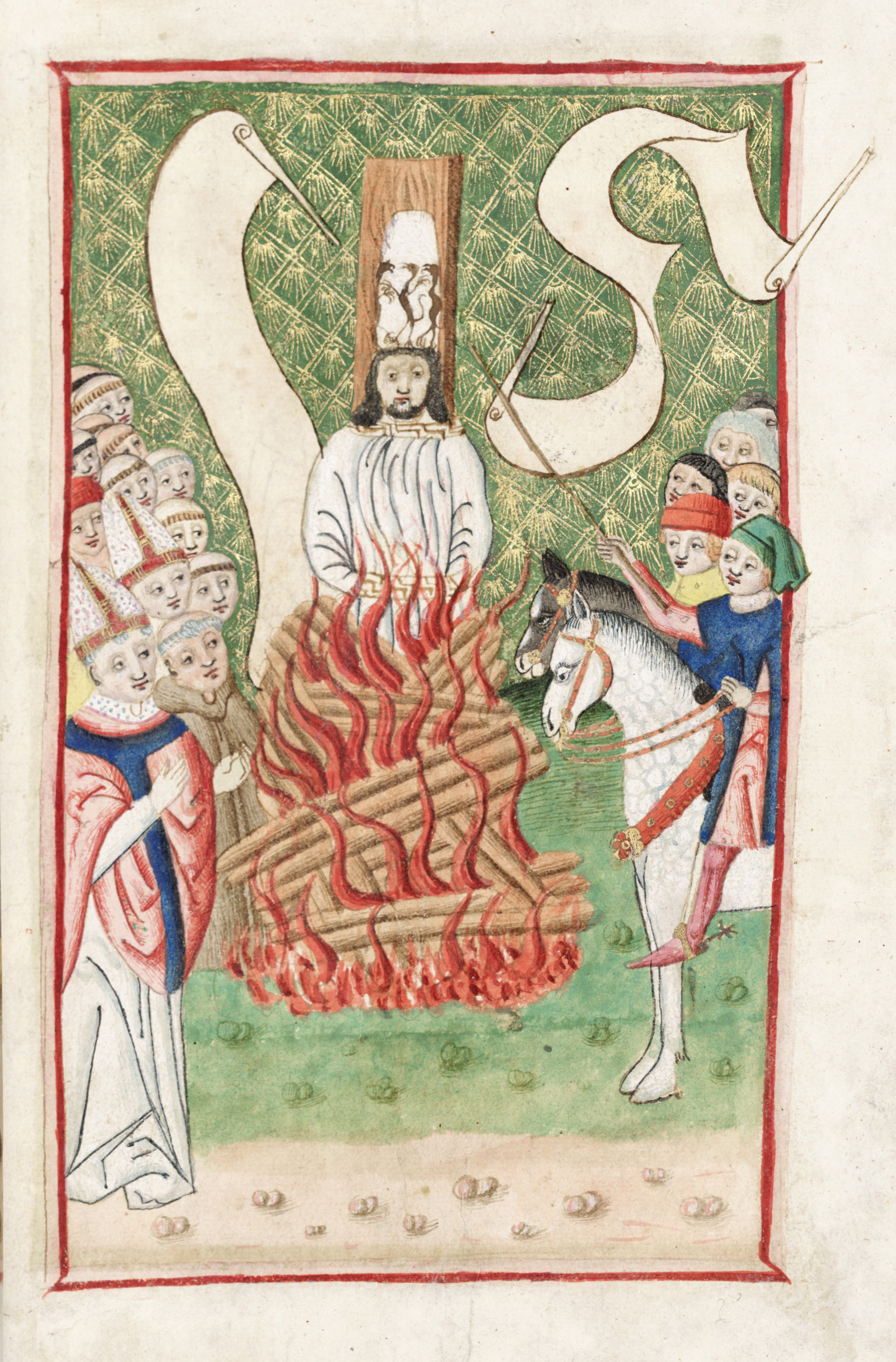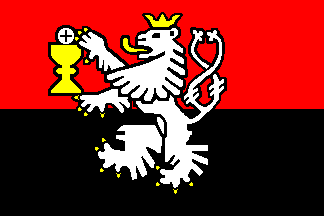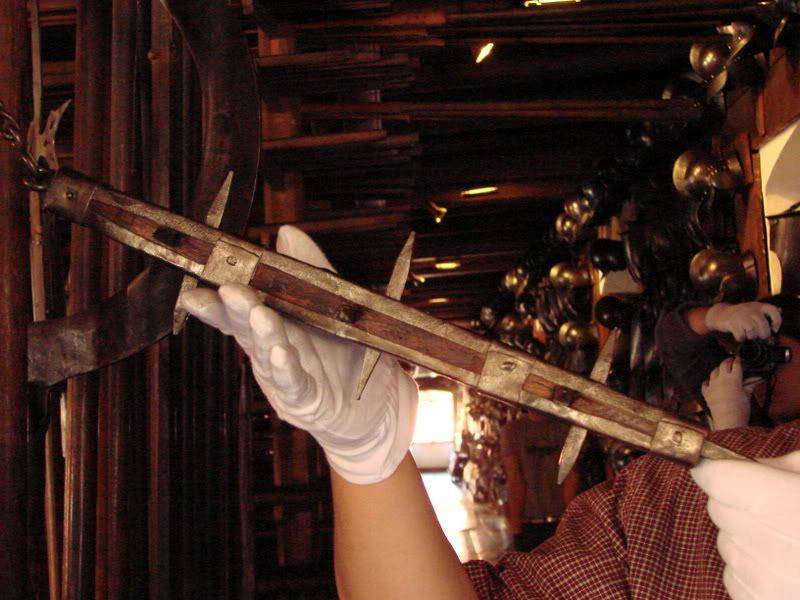Ok here I'm going to post an article on military history I wrote which I thought could serve here as a little introduction into a particularly interesting region of Europe (Bohemia), which could possibly provide fodder for Historical or quasi-Historical campaigns in DnD or other games (it would be a natural for Warhammer FRPG) or you might find some adventure hooks or other useful ideas.
This is an overview of two major events in the development of the politics and culture of this interesting region of Europe which I believe played a special role in the development of the European Martial arts.
Mongol Invasions 1241 AD
Very very few people seem to be aware of this, but during the famous Mongol invasion of Europe in the 13th century, after defeating the Poles and Teutonic Knights at Leigneitz on their way to defeat the Hungarians at Sajo river, the Mongols tangled with the Bohemians ... and lost.
Wikipedia said:
In 1241 Wenceslaus successfully repelled a raid on Bohemia by forces serving under Batu Khan and Subutai of the Mongol Empire as part of the Mongol invasion of Europe. The Mongols did not sent their main army to the Kingdom of Poland, Bohemia and Silesia and only Moravia suffered devastation at their hands. The raids into these four areas were led by Baidar, Kadan and Orda Khan with a force of around 20,000 Mongols. Following the Mongol victory at the Battle of Legnica, Wenceslaus fell back to gather reinforcements from Thuringia and Saxony, but was overtaken by the Mongol vanguard at Kłodzko. However, the Bohemian cavalry easily fended off the Mongol detachment. As Baidar and Kadan's orders had been to serve as a diversion, they turned away from Bohemia and Poland and went southward to join Batu and Subutai, who had crushed the Hungarians at the Battle of Mohi.
Wenceslaus I of Bohemia - Wikipedia, the free encyclopedia
The importance of this "raid" by 20,000 Mongol warriors on European, German or Mongol history can be debated, but it's importance on the Czechs and Bohemia is undeniable. Prominent among the many reasons why vast zones of Eastern Europe, Central Asia and the Middle East lag behind Western Europe on many levels was being sacked by the Mongol hordes. This is not something you recover from overnight, a proper Mongol sacking wasn't the ordinary garden variety rape and pillage you might get from mere Goths or Vandals or Saracens... the Mongols routinely systematically depopulated the regions they conquered, and in many cases methodically burned and dismantled towns (including several famous libraries), filled in wells with rubble, tore down bridges, even broke up terracing on hills... All in the spirit of jolly old Ghengiz Khan, who abhorred cities and felt the world should be made into one great Steppe.
Escaping this fate was a macrohistorical event for this region.
Hussite Wars 1420-1434
The next key event was the Hussite Wars. Again, something of a sidebar in European History, apparently, but of immense importance in this region. Statues of the principle figures still prominent in places like Prague the way those of Washington and Jefferson are in the United States.
Hussite Wars - Wikipedia, the free encyclopedia
Hussite Wars, 1420-1434
In a nutshell, the Bohemians had a kind of mini Protestant reformation 100 years early. It started with a heresy based on the teachings of the English theologian
John Wycliffe. In this time after the death of their King the Bohemians were facing the annexation of their nation by the HRE and the Catholic Church and the elimination of their traditional autonomy, and the region was in turmoil.
That is when
Jan Hus sort of a Ghandi type, translated the bible into the vernacular, preached a new radical doctrine of equal justice (symbolized by giving the laity the right to drink wine at Communion, which lead to the goblet appearing on the Hussite flag) and quite strange for this time, (but not for this region) equality for women.
Jan Hus said:
“ Women were made in the image of God and should fear no man”
setting the stage for women to preach at Hussite services and participate in governing councils, not to mention fight beside their men in battle.
He was invited to discuss these statements at a theological conference in Germany where he was promptly burned at the stake*. This led to a massive uprising back in Bohemia and a famous “defenestration” (a nice way of saying a lot of Bishops and Lords were marched up to the tops of towers and church steeples and thrown out of windows) in Prague, Pilsen and other towns. There was a nasty ethnic side to this religious conflict, and atrocities were also committed against ethnic Germans in some regions, though many sided with the Czechs, notably in the larger cities.
They created a new full blown heresy based on the teachings of Jan Hus which came to be called “Hussites”
This prompted the Pope to call a Crusade, which was quickly answered by armies from across Europe, eager to pillage the rich region of Bohemia and gain remittances in the process.
Normally a crusading army on the way to assault and ravage your homeland would be cause for serious concern, but the Bohemians had this guy
Jan Ziska a badass Clint Eastwood type dude with a patch over one eye who liked to carry a mace. Ziska helped them organize and develop new battle tactics based on their traditional weapons (which may have some significance for HEMA and the Federfechter) Among the innovations of the Hussites:
-Pioneering the use of both firearms and artillery (including inventing new pieces such as the pistol and the hook gun, as well as various forms of single and multi-barreled cannons)
-Pioneering the use of sophisticated wagonberg tactics, integrating infantry, artillery, and mobile fortresses made of wagons which could be chained together for mutual defense
Hussite Wars - Wikipedia, the free encyclopedia
Wagon fort - Wikipedia, the free encyclopedia
featuring the enhanced systematic use of handgonnes / hand culverins
and articulated clubs / flails wielded by peasants skilled in threshing (including Women)
Thus fortified for battle, the Hussites met the foreign onslaught and
smashed the large international Crusading army which invaded Bohemia, and did the same to every other which followed,
Hussite Wars - Wikipedia, the free encyclopedia
Hussite Wars - Wikipedia, the free encyclopedia
Hussite Wars - Wikipedia, the free encyclopedia
Hussite Wars - Wikipedia, the free encyclopedia
...and then went on a number of rampages through Germany, even reaching the Baltic where they allegedly performed some kind of weird pagan ceremony.
Hussite Wars - Wikipedia, the free encyclopedia
Finally radical wings of the Hussites, the “Taborites” (who made their own new utopian city Tabor which remains a largely intact 15th century city)
...and the radicals lead in some cases by dangerous demagogues, split off from the main group and tried to establish the new order, leading to civil wars among the Hussites. Ziska sided with the radical Taborites and defeated the Aristocrats and the city of Prague, but each time the Crusaders returned the two sides patched up their differences and joined ranks against the enemies. Finally, Ziska died in 1424, having never lost a battle.
There were several more attempted invasions in the next few years, all of which ended in victory by the Hussites under their new leader
Prokop the Great. In the end the Vatican and the HRE cut a deal with the moderates (called Ultraquists) and together they broke the power of the radicals (who called themselves the "Orphans" since the death of their hero Ziska), thus achieving nominal suzerainty over the area, but Bohemia retained their de-facto independence and maintained it's own religious and practices until well after the Protestant Reformation, into the 17th Century in some zones. Which trust me had a lot of consequences on how the place developed and what it is like to this day.
G.
* But he may not continue to burn in hell forever though, the Vatican is reconsidering his case:
Vatican reconsidering view on Jan Hus - Bohemian reformer | Christian Century | Find Articles at BNET














